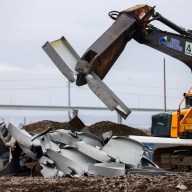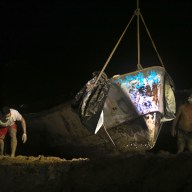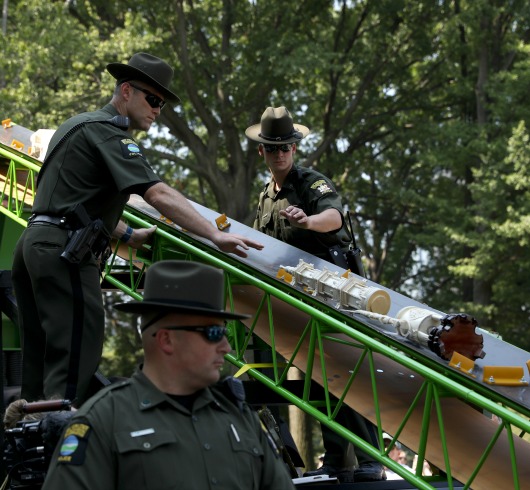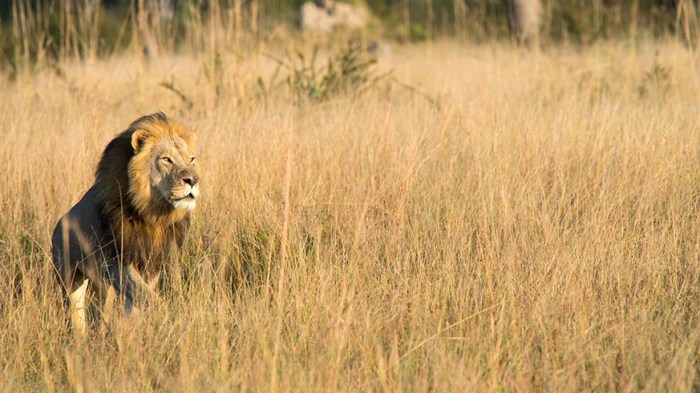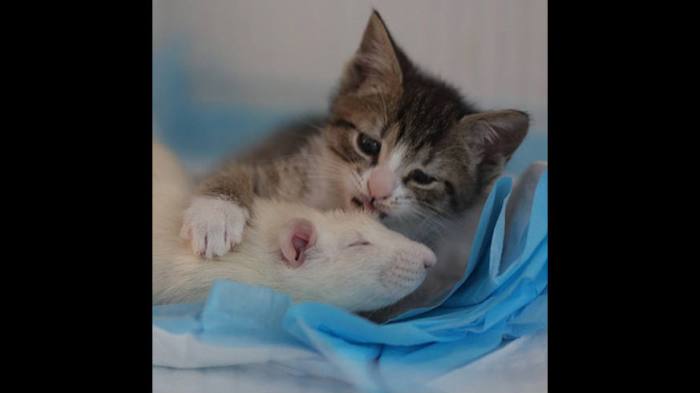As outrage built since last weekend’s killing of an endangered gorilla at the Cincinnati Zoo after a child breached the animal’s enclosure, talk among animal rights activists turned to who bore responsibility and how to prevent a similar tragedy. Zookeepers shot the ape, a 450-pound, 17-year-old lowland silverback gorilla named Harambe, after a 3-year-old boy slipped away from his mother and into the exhibit. Officials have said they made the decision because the child’s life was in danger. The boy was not injured. Around the world, a debate has sprung up about who was to blame for the tragedy: the zoo, or the boy’s mom. Some have called for legislation, dubbed “Harambe’s Law,” that would hold zoogoers responsible when animals are harmed due to their negligence. Police in Cincinnati are now investigating the incident.
Gorillas are also kept in captivity at Boston’s Franklin Park Zoo, but the exhibit is significantly different in Boston from the open-airenclosure in Cincinnati.
RELATED: Harambe’s Law: Activists want new legislationafter gorilla’s death Gorillas at Franklin Park are separated from viewers by walls of thick glass, and a roof topped with steel mesh, which has been there since a renovation nearly a decade ago. The $2.3 million update came after a 300-pound gorilla named Little Joe escaped the zoo in 2003, injuring a zookeeper and a 2-year-old girl. The ape roamed the neighborhood for two hours before being recaptured. “At FranklinPark Zooand Stone Zoo, thesafety of our visitors and animals is the highest priority and one that we take very seriously,” Zoo New England President and CEO John Linehan said in a written statement. He also said the zoo runs drills and collaborates with law enforcement to prepare in case things go wrong, including animal escapes and “human animal interaction,” as well as fires and extreme weather. Among those weighing in on the Cincinnati Zoo incident this week was Jeff Corwin, a Massachusetts native and cable television channel Animal Planet star, who said he wanted to send a message to parents taking children to the zoo. “When you’re there with your family, you have a responsibility for your children,” the zoo advocate saidin an interview with CBS. “The zoo is not your babysitter. Take a break from the selfie and the texting. They’re wild animals.” Corwin also called the decision to kill the ape in Cincinnati a tragic, but necessary choice.
Theodora Capaldo, president and CEO of the New England Anti-Vivisection Society, said when it comes to Harambe’s death, she blames everyone involved.
“When animals are held in captivity they are our victims,” Capaldo said. “[Harambe] was doing nothing wrong. His only sin or crime against humanity happens to be that he’s a different species.” Capaldo and her organization argue against the use of animals in scientific research and against using animals for humans’ gains.
RELATED:Gorilla’s death triggers social media backlash
In Boston, Capaldo said she knows many zookeepers at the Franklin Park Zoo personally and said they are “amazing people” who love the animals in their care.
“That still means the institution itself can be challenged, even if there are sincere, good-hearted people working there,” she said.
The Massachusetts Society for the Prevention of Cruelty to Animals, through a spokesman, declined to comment on the Cincinnati incident, but directed Metro to its written statements on animals in captivity. According to those statements, the MSPCA believes “wild animals should be permitted to exist undisturbed in their native environments,” but sets guidelines for zoo. Among them are that animals not be removed just to be featured as entertainment, that the exhibits educate the public thoroughly about wildlife and that the animals’ care and safety is paramount. Elsewhere, the incident has brought renewed attention to zoos around the world.
Although cases like the one in Cincinnati are extremely rare, the breach of the gorilla pen’s barriers was bound to happen, said Julia Gallucci, a primatologist with People for the Ethical Treatment of Animals (PETA), because zoos around the world haven’t done enough to keep people and dangerous animals apart. RELATED:New York group calls for closure of all zoos after gorilla’s death “We need to look at it from a broader view: How could this have been prevented?” Gallucci said. “The zoo has a responsibility to protect the animals and the humans and they shouldn’t leave that to chance. They should not assume the parents are going to watch their kids.” PETA, she said, has argued that gorillas in captivity should instead be kept in sanctuaries, at a distance from humans.
“Captive gorillas and other great apes, once they’re in captivity, they have to stay captive,” Gallucci said. “But they should be in accredited sanctuaries where their needs come first, where they are not put on display and are certainly better protected.” Note: This article has been updated to include a written statement from Zoo New England President and CEO John Linehan.






